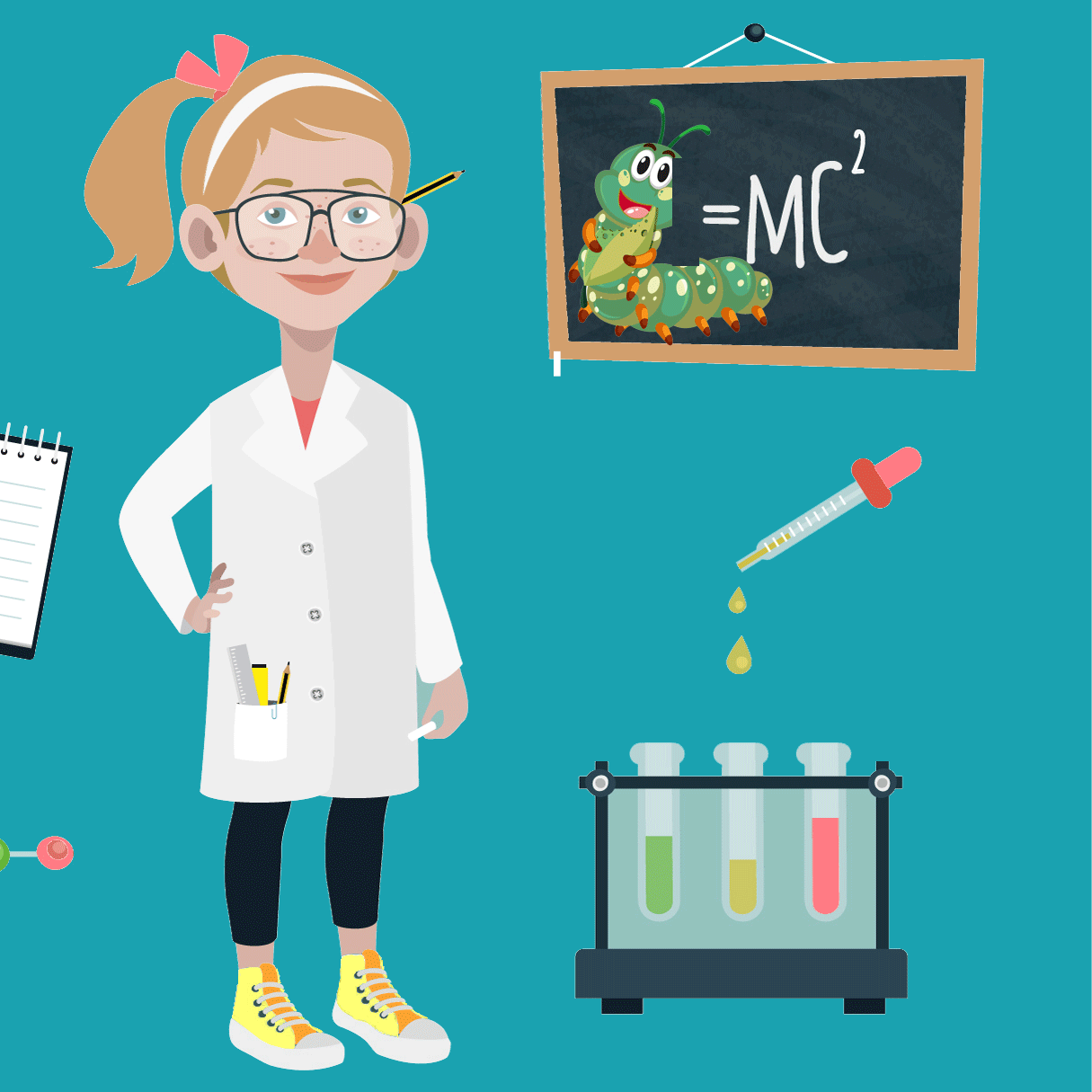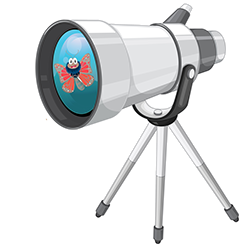Expansion vs. Innovation?
![]() Innovation & transformation involves much more than expansion & improvement
Innovation & transformation involves much more than expansion & improvement
What research guides growth?
 Not all research translates into implementation & impact when helping programs to grow.
Not all research translates into implementation & impact when helping programs to grow.
Where are the leaders?
 Know what you need in a leader, and match them care-fully to your program's goals.
Know what you need in a leader, and match them care-fully to your program's goals.
Are you ready to grow?
 Can you incorporate the new approaches, stark feedback, and partnerships needed?
Can you incorporate the new approaches, stark feedback, and partnerships needed?
Countdown to startup
![]() A timeline for the leadership, resources, and preparation needed to launch
A timeline for the leadership, resources, and preparation needed to launch
Coming Soon
Failure to Launch: Starting new programs of ASD services and training
Incremental growth and transformation in a university-based ASD transition program
July 28, 2017
![]() Universities across the country have sought to identify ways to include people in the spectrum in the university community as students or employees. The examples offered below draw on my detailed description of the development of the Transition Pathways Proposal This example helps to illustrate just some of the distinctions noted earlier between incremental and transformative growth, but there are many others. Each of the examples outlined below is within the reach of any university that designates the right leader, develops the right implementation plan, and allocates the the right resources.
Universities across the country have sought to identify ways to include people in the spectrum in the university community as students or employees. The examples offered below draw on my detailed description of the development of the Transition Pathways Proposal This example helps to illustrate just some of the distinctions noted earlier between incremental and transformative growth, but there are many others. Each of the examples outlined below is within the reach of any university that designates the right leader, develops the right implementation plan, and allocates the the right resources.
A starting point: Human Resources or Student Support Services tailored to people with ASD and related conditions
For a university-based program to add elements included in the Transition Pathways Proposal, we begin by assuming that there are other services already in place to effectively address the needs of people with disabilities and differences who are already part of the university community. Take student support services, for example. The prevalence of ASD - and especially ASD in the absence of intellectual disabilities - would lead us to expect that a not insignificant minority of students already enrolled in most universities have ASD. Some of these students will have already presented themselves to student support services in search of either personal counseling or academic guidance. And the unique needs of this particular group of students (e.g., their increasing numbers, or the complexity of the issues they present with) should have already prompted the university to developed some more specialized support programs. This can include anything from additional training for faculty and staff in ASD, to designating staff to provide more specialized support, to creating other programs specifically targeting this population (like Drexel's Autism Support Program).
We would also expect that most universities already have programs in place to support employees with disabilities related to ASD. Though every university has well-established policies and protocols to accommodate people with physical and sensory disabilities, many may be surprised by the lack of comparable practices for supporting employees with intellectual disabilities or ID. Practices might range from a partnership with a local provider of rehabilitation services to support clients with ID to agreements with a local school district to provide internships to graduating students to more coordinated programs, like Project Search discussed below. For example, our preliminary review of such services at Drexel, prior to the launch of Transition Pathways, revealed no history of such agreements with schools or vocational providers - indeed, no data at all on whether anyone with ASD or related developmental disabilities might be employed at Drexel.
This assumption is important, for two reasons. First, long-term increases in the capacity to accommodate people on the spectrum as students or employees will never occur easily with a separate ASD program; these have to build on other services provided to people with differences and disabilities. For example, a program to support students with ASD will likely partner with, if not fall under, other student services.
Second, the existence of basic supports for people with disabilities is a litmus test for the potential for growth. Does the university culture already foster a commitment to accommodate people who are different, or respond to the concerns of employees who might recognize an emerging need, or take action when a group of students or employees are clearly struggling? Or is the university too concerned about its brand or image to comfortably acknowledge when it needs to grow and change.
Incremental Growth
Each example of the incremental growth of services and training of transition programs requires that a plan be developed, a leader be identified, and resources be allocated. And the specific type of plan, leader, and resources will differ depending on the type of the initiative undertaken. More ambitious planning might involve undertaking different types of improvement, expansion, or replication as separate steps in a phased rollout.
Improvement and Expansion
Many individual elements of the Transition Pathways Proposal illustrated how existing services might be improved and/or expanded.
- Train faculty and staff on academic accommodations that students for ASD or related disabilities
- Train and coach targeted staff in student support services who might be designated to provide academic and mental health counseling to students with ASD
- Create a specialized support group (perhaps including peer mentoring) as part of student services to help those on the spectrum who might struggle because they are socially isolated
- Bundle these improvements into a specially-designated program to help students on the spectrum, perhaps with additional fees
- Hire new student counselors with specific experience in supporting students on the spectrum
- Create a new partnership with a local public school or vocational rehabilitation services agency to provide employment internships for students with developmental disabilities. This draws on an important lesson: collaborative networks multiply the impact of new initiatives when they carefully draw on the strengths of each partner
Replication
A critical part of any planning phase is the careful evaluation of existing models for potential replication (in this case, for post-secondary education and employment). Are they cost-effective? Do they fit with the project's goals? This was an early and important step in the development of the Transition Pathways Proposal.
- As described elsewhere, I carefully considered the advantage of becoming a Project SEARCH site. In summary, Project SEARCH is a very well-established package for creating hospital-based employment internships for students with disabilities in their final year of high school. For hospitals on a limited budget and no plan to invest in other kinds of internships or nurture existing expertise, Project SEARCH offers a turnkey solution. In the end, I concluded that Project SEARCH limited our potential for future growth, and recommended that we do not adopt this model.
- As described elsewhere, I carefully considered the advantages of ThinkCollege model. In the end, I did not consider ThinkCollege to be prescriptive enough to describe our goal as seeking to replicate them: too many important elements vary from one site to another. But the ThinkCollege network - and especially the Dream Partnership here in Pennsylvania - offered too many useful training and funding opportunities to ignore, and the standards set for all participating sites offer a useful starting point for the design of the School Pathway of the Transition Pathways Proposal. I led the development of a funding proposal to the Dream Partnership, which was granted in February 2016.
Transformative Growth
No organization as large and as well established as Drexel would ever be fundamentally transformed through a single project. Likewise, the proposed additions captured in the Transition Pathways Proposal were not envisioned to fundamentally change the mission or structure of the program housing Transition Pathways, the AJ Drexel Autism Institute. Nonetheless, the Transition Pathways Proposal outlines plans exemplifying program innovation and incubation.
It is important to to distinguish here between the proposal that I wrote based on the program I designed, from the Transition Pathways Program actually undertaken subsequent to my departure. The program actually underway and described in publicly available documents demonstrates incremental growth (primarily through replication of other programs). It has yet to - and may never - demonstrate the innovation and incubation described below. This gap may well illustrate the critical importance of strong and experienced leadership, especially for ambitious initiatives.
Innovation
By innovation, we mean multiple, significant program enhancements undertaken simultaneously, and that add new elements and new populations to existing programs, together with new partnerships with other agencies. The range and combination of elements captured in the 5 year plan were innovative (Doehring, 2016a).
- The equal emphasis on core outcomes envisioned in the Transition Pathways Proposal - to create multiple and coordinated pathways to work and continuing education - is innovative. Most college-based transition programs tend to focus either on employment or coursework.
- The inclusion of a specific plan designed to significantly increase capacity is also innovative, especially given the breadth of the program. This includes the sheer number of students expected to participate in the program over 5-7 years (0ver 350) and the new capacity created through multiple, community-based employment and replication sites.
- This is the first proposal for a post-secondary program for students with ASD specifically designed to significantly reduce if not eliminate fees for low-income populations.
Incubation
By incubation, we mean adding new sites that can implement a new program model, and that themselves are largely capable of independently of maintaining and them replicating themselves. The Transition Pathways Proposal outlined mechanisms for incubating programs within and outside of Drexel (Doehring, 2016b), and listed several specific outcomes
- Incubate a new multi-agency partnership between Drexel, an urban school district, and a community-based vocational rehabilitation provider
- Incubate an expanded program of peer mentoring for students with ASD at Drexel
- Incubate a program to support employees with ASD at Drexel
Related Content
On this site
Other Examples of Growth
![]() An ASD Teacher Training Program
An ASD Teacher Training Program
![]() A Hospital-Based ASD Clinic
A Hospital-Based ASD Clinic
Expansion vs. Innovation?
![]() Innovation & transformation involves much more than expansion & improvement
Innovation & transformation involves much more than expansion & improvement
What research guides growth?
 Not all research translates into implementation & impact when helping programs to grow.
Not all research translates into implementation & impact when helping programs to grow.
Where are the leaders?
 Know what you need in a leader, and match them care-fully to your program's goals.
Know what you need in a leader, and match them care-fully to your program's goals.
Are you ready to grow?
 Can you incorporate the new approaches, stark feedback, and partnerships needed?
Can you incorporate the new approaches, stark feedback, and partnerships needed?
Countdown to startup
![]() A timeline for the leadership, resources, and preparation needed to launch
A timeline for the leadership, resources, and preparation needed to launch
Coming Soon
X
My Presentations and Publications
![]() (2016a) Innovative approaches to developing a multi-agency, college-based ASD transition program. Ohio Center for Autism and Low Incidence Conference, Columbus, OH.
(2016a) Innovative approaches to developing a multi-agency, college-based ASD transition program. Ohio Center for Autism and Low Incidence Conference, Columbus, OH.
 (2016b). Incubating programs of services and training for people with developmental disabilities: A new partnership for UCEDDs, community-based providers, and philanthropists. Association of University Centers on Disability, Washington, DC.
(2016b). Incubating programs of services and training for people with developmental disabilities: A new partnership for UCEDDs, community-based providers, and philanthropists. Association of University Centers on Disability, Washington, DC.
Guideposts
Note that the story of the Transition Pathways Proposal references many Guideposts: these are not duplicated here
![]() Simple Steps Launching a complex program in phases helps to maintain focus on specific goals, and to document progress for funders.
Simple Steps Launching a complex program in phases helps to maintain focus on specific goals, and to document progress for funders.
![]() Other Lessons Collaborative networks multiply the impact of new initiatives when they carefully draw on the strengths of each partner
Other Lessons Collaborative networks multiply the impact of new initiatives when they carefully draw on the strengths of each partner